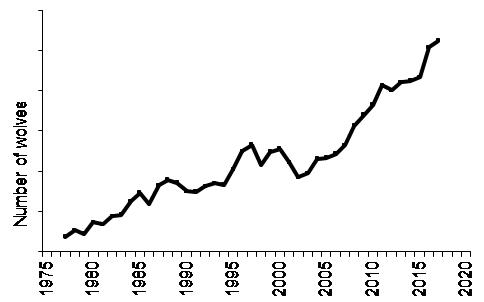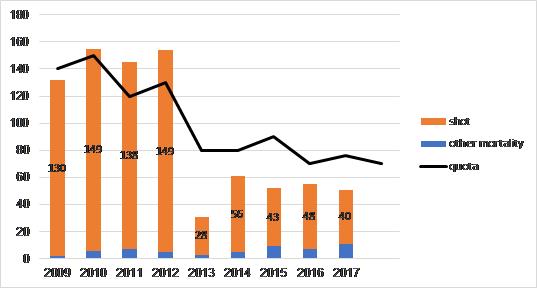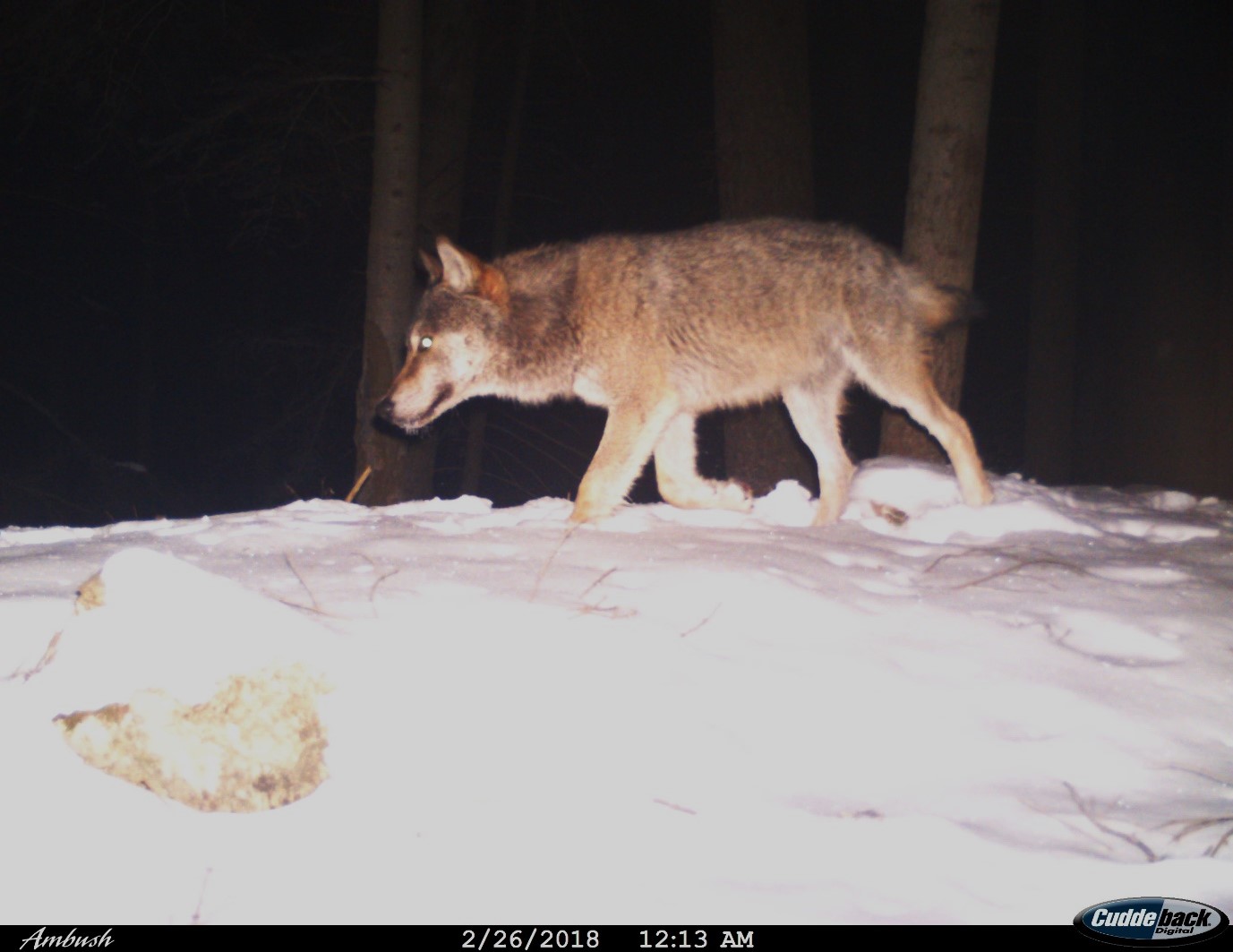Position statement on the wolf hunting quota for 2018/2019
On 25.10.2018 the Working Group for setting the wolf hunting quota and conditions in Slovakia held its annual meeting. The Ministry of Agriculture and Rural Development subsequently set a quota of 70 wolves for the 2018/2019 hunting season.
The role of members of the Working Group is to submit materials for negotiation according to the Programme of Care of the Grey Wolf in Slovakia, which was approved by the Ministry of the Environment in 2016. As the general director of the Section of Forestry and Wood Processing appointed Slovak Wildlife Society chairman Robin Rigg as a member of the working group, we had the chance to take part in the discussions and present results of monitoring wolves during the period 2010–2018.
Our first priority, in accordance with recommendations of the European Commission as well as the World Conservation Union – Large Carnivore Initiative for Europe (IUCN – LCIE), is to ensure that wolf management in Slovakia is sustainable and based on reliable, objective facts. However, we recognise the need to find compromises between nature conservation and human activities including hunting and farming.
Firstly, we are glad to note that the wolf population in Slovakia is doing well, as shown by the long-term trend in numbers (Figure 1), expansion of the occupied range as well as the results of monitoring conducted by the National Forestry Centre and our organization on the status of the wolf population in Slovakia, which at the present time is stable or growing.
Figure 1 Wolf population trend in Slovakia (source: Hunting Statistical Yearbook)

Within a historical context, we view a quota of 70 in a positive light. We should not forget how the situation was 50 years ago, when the wolf was persecuted and could be killed anywhere by any means at any time. From 1975 hunting began to be regulated and wolves were not allowed to be poisoned or trapped. Another significant change happened in 2009 when, for the first time, annual quotas to limit hunting were introduced. However, they were very high (120 to 150 individuals) given the status of the wolf at that time. Following intervention by the European Commission in 2013 the situation radically changed: quotas were reduced by almost half and conditions on hunting became much stricter. A requirement for on-site inspections of shot wolves was introduced together with a ban on hunting wolves in protected areas, in border regions and during drive hunts. Thanks to these measures, the number of wolves shot decreased markedly (Figure 2).
Figure 2 Quotas and numbers of shot wolves (source: Hunting Statistical Yearbook)

Decisions on the level of wolf hunting quotas are made by the general director of the Section of Forestry and Wood Processing, who has the difficult role of finding a compromise between the demands of diverse interest groups: above all hunters, farmers and conservationists. Although hunting representatives predominate in the working group, at the meeting there were also representatives of the Ministry of Environment, the State Nature Conservancy, the livestock breeders’ association, non-governmental organizations and researchers. The general director allowed space for everyone to come up with relevant data and arguments.
Within the given time, Robin Rigg, chairman of the Slovak Wildlife Society (SWS), presented the results of genetic monitoring which indicate that a quota of 70 wolves is probably sustainable at the population level. These findings are in agreement with those presented by the National Forestry Centre based on monitoring wolf reproduction.
Quota proposals
Based on the fact that the wolf is a predator of red deer and wild boar, numbers of which are currently very high and growing, resulting in substantial damage to agriculture and forestry, SWS proposed reducing the quota by 75% compared to last year, i.e. 20 individuals, while complying with the conditions for hunting prescribed in the Programme of Care of the Grey Wolf. If this proposal had been accepted, it would have been the lowest level of hunting ever.
The State Nature Conservancy, which came up with a "temporary solution" of a zero quota (i.e. a hunting ban), did not provide any relevant data in support of its proposal and did not persuade the other members of the working group. The representative of NGO Wolf Forest Protection Movement did not bring any relevant materials to the meeting which could contribute to a reduction of the wolf quota in Slovakia and also did not persuade them. On the other hand, proposals tabled by representatives of the hunting community ranged from 110 to 160 individuals.
As a compromise between all the interest groups a quota of 70 wolves was set, which is 6 less than last year and according to the best available data is at a sustainable level. This figure shows an improvement in the ability to accept compromise, a willingness to agree and to set the quota on the basis of results of scientific research. At the same time, we see it as a significant qualitative shift in changing the approach of the responsible authorities as well as hunters.
Robin Rigg BA MSc.
Chairman, Slovak Wildlife Society (SWS)
What we do
SWS conducts the longest-running programme of systematic monitoring focused on wolves in Slovakia. Since 2010 we have studied wolves as well as lynx using non-invasive methods: tracking, genetic analysis and camera traps. In collaboration with a leading research centre at the University of Ljubljana (Slovenia) and their specialists in molecular genetics, we monitor the wolf population in the model area of Liptov, northern Slovakia. Our results indicate, with 95% certainty, that within this area 46 – 53 wolves live in 8 family groups (packs). During the period 2016 – 2018 numbers were stable
Thanks to the precision of our scientific research we are able to determine the family relationships between individual wolves and in some cases even follow their movements in the landscape without using telemetry. Slovakia and its wolf population are regarded positively thanks to the results achieved and their presentation at prestigious European forums.


